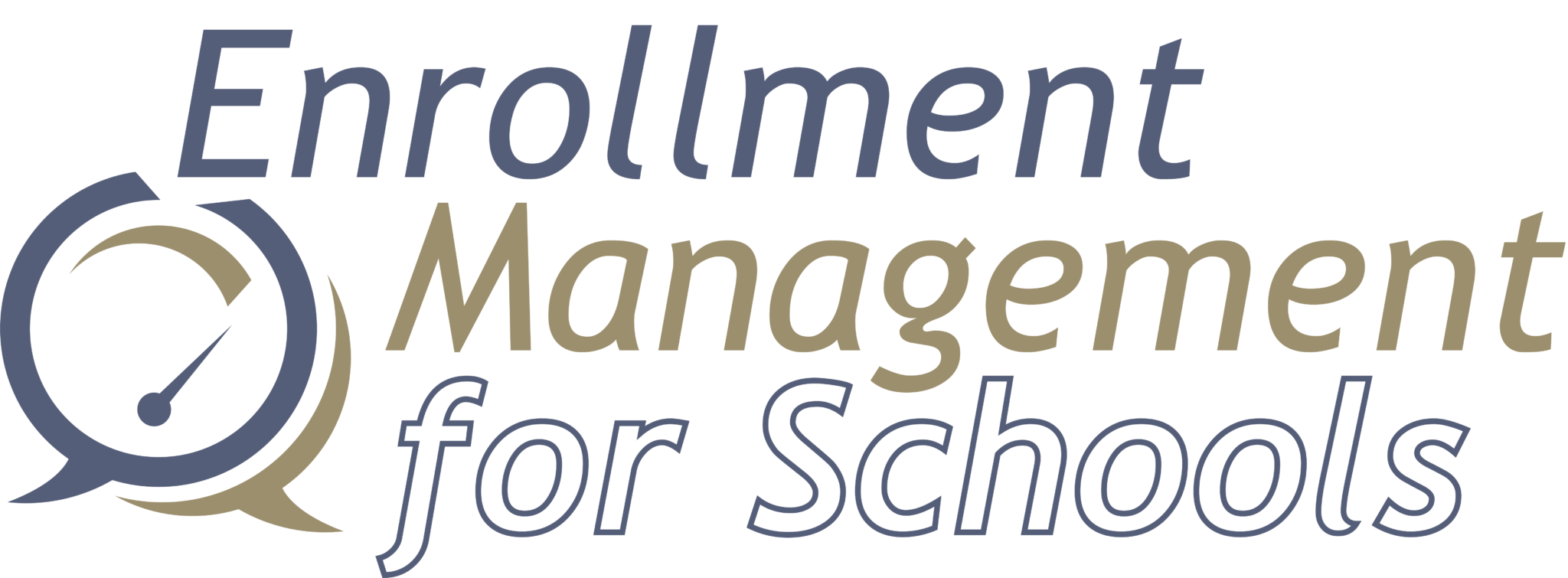 What is a yield strategy? This is a combination of touchpoints that are strategically positioned to help the private school matriculate more of the desired full-pay applicants. By using varying touchpoints and a planned conversion approach, you can move families through your admission process in a strategic and intentional way. When trying to matriculate these families, schools should pay careful attention to the families’ needs, using a customer centric approach that will give them a reason for giving up their free public school option or other private school choices. Here are some tips to think about in order to create or strengthen your plan.
What is a yield strategy? This is a combination of touchpoints that are strategically positioned to help the private school matriculate more of the desired full-pay applicants. By using varying touchpoints and a planned conversion approach, you can move families through your admission process in a strategic and intentional way. When trying to matriculate these families, schools should pay careful attention to the families’ needs, using a customer centric approach that will give them a reason for giving up their free public school option or other private school choices. Here are some tips to think about in order to create or strengthen your plan.
- A Plan? – Whether it is a written document or not, you should think through your process for yielding full-pay families. Sit with a team of people and start brainstorming, then develop it. The items below will help.
- Allies for Executing the Plan – you will need a myriad of people to help you. Group A is comprised of selected employees – administrators, faculty, and staff. Group B includes your disciples, people who have experienced your program in some way – alumni, current and former parents and current and former students. Group C are referring parties – secondary placement professionals, educational consultants, day care providers, clubs and organizations who might influence families. You will employ strategies, some different, to get each of these groups to help you in the yield process. Approach them as different segments with different needs and responsibilities.
- Understand the target population. Even among the full-pay families, there are different lifestyles and biases. You need to understand the needs of the urban full-pay family versus the rural full-pay family. This will allow you to tweak their experiences when you can.
- What tools are you offering your team of helpers? You need to know your brand message, so that everyone else among your allies understands it too. Create a written description of your brand that everyone uses when they are describing your education. You want to capture those families who will salivate when they hear what your school is offering. Create a “must have it”, because, in fact, it is well worth your cost to them.
- First Contact – the first official contact or touchpoint with the school can be at any time. It can be a phone call to your school to receive an inquiry packet, a visit to an open house, or an employee giving unofficial testimonials about your school. However, because it is an employee, the conversation will represent the school officially. This means that somewhere at the beginning of the school year, you must remind folks about their influence. Many of us have the story in which the visitor’s first experience was with the maintenance person who either scored a lot of points with the family or didn’t help them very much at all. Leadership speaking with employees can work to your benefit.
- Execute quality experiences with a purpose. For each event, you should be able to know what parents and students should get from the event which informs them that you have the right solution for their educational needs. Let’s say you add a student panel as part of your event. What will the panel convey to your visitors about your educational solution for a particular need of the customer? Your student panel, for example, might need to answer these questions in the minds of the customer: “Do the students seem engaged in their education? Do they appear to be students with whom I would want my child sharing time and experiences? Will my child be able to find friends among these students?
- Individual Contacts – You should know what types of individual contacts you can set-up for the student or parents. Are these people ready to partner with you: Coaches, learning specialist, grade level teachers, Model United Nation Advisor, Arts faculty, subject teachers, etc. Later in the process, the conversations with these folks can make or break your yield. Are these people articulating your brand in addition to the conversations about their area of expertise?
- Student and Parent Ambassadors – Adding your disciples into the mix will help you along the way and may tip the scale with the right types of conversations. They can also tear down what you have created. So, know their stories and biases and then, let them work for you.
- Revisit Days – I have to pull this event out separately from the others. This is an event for accepted students who may or may not have submitted their contract yet. At this point, you know you want and need them. This event should be the best, most thorough marketing performance. Take the time to get it right.
- Objections – Knowing the objections to coming to your school is an essential part of the yield process. Objections can come in different shapes or forms. Examples are: your school is the opposite direction from the parent’s work place, you don’t offer marine biology, you are single sex and the parents don’t want their boy and girl in two different schools, or you don’t have an after school program that stays open past 5:00 p.m. You need to acknowledge the objection, even if you can’t solve it. Then, you want to focus them on the huge value that they will get from your educational program that is worth moving the objection out of the equation.
- Statistical Analysis – review the data on who participates in which activity or experiences. This could give you some useful information on what is working and what is not. Are the events the ones that are attracting full-pay families? Please always track your full-pay applications.
These ideas should help you to start developing a more focused yield program. If you have questions or need clarity, please let me know in the comment section.

